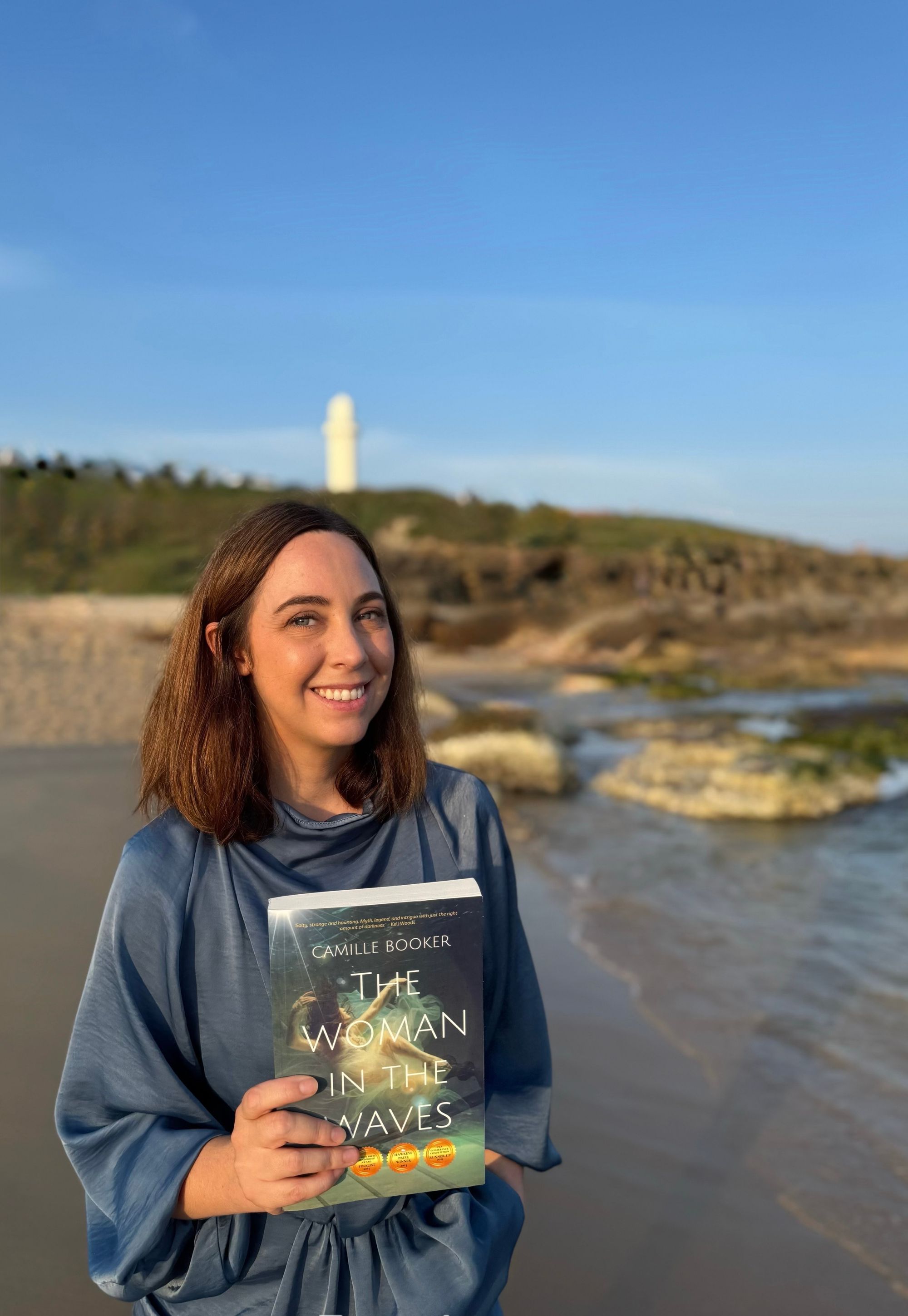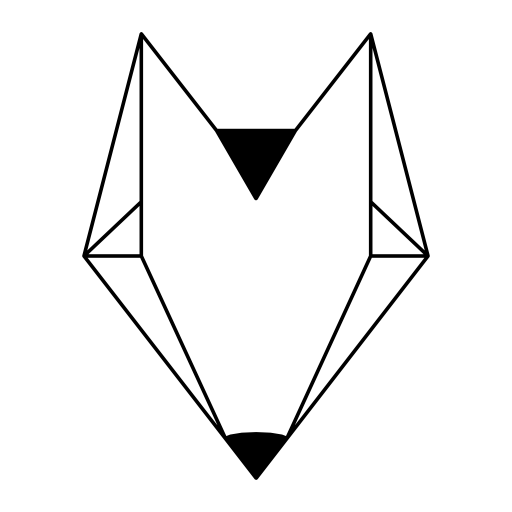
Interview: Author Camille Booker
I had the pleasure of interviewing Camille Booker, an extraordinarily talented writer whose book, The Woman in the Waves, was the winner of our 2022 Unpublished Contest in the Mystery/Thriller category. The Woman in the Waves just released in March from Hawkeye Publishing.
Find a quick teaser below:
Even the heaviest secrets can float to the surface.
There's something sinister lurking in the waves ... It's 1921 in Widow's Peak, a gloomy fishing village on the south coast of New South Wales. Nineteen-year-old Missy Green fills her days helping her fisherman father on his trawler, and spending time with her grandfather, the town's reclusive lighthouse keeper. It's a dreary existence. Everything in her sea salt-soaked life is upended, though, when she glimpses something in the water—a mermaid ominously staring at her.
When Missy discovers the dead body of a woman washed up on shore, her disturbing hallucinations of the mermaid gather steam.
Missy must navigate the treacherous waters of her secret-filled town while attempting not to drown in the recesses of her mind, and the eyes of a handsome detective.
Ciara Duggan: The Woman in the Waves is a piece of dark historical fiction with elements of mystery, psychological suspense, and romance interwoven into the narrative. It is such a unique story, that I’d love to know what inspired the concept? Was there a tiny seed of an idea that grew into your story? Did it all come to you at once?
Camille Booker: The plot, the characters, the themes—all of these elements originated from the setting. I was inspired to write The Woman in the Waves while I was living on the south coast of NSW, in Wollongong, the only town in Australia with two lighthouses. I began with a vague idea about a lighthouse and a spooky mermaid, and the story slowly grew from there.
I’ve always had a lifelong love affair with and fascination for lighthouses. However, the bones of this story were dreamt up when the world was first plunged into isolation due to the outbreak of the pandemic, when I was pregnant with my second child. I drew heavily on the concept of the lighthouse to explore themes of isolation and loneliness, of navigating through life’s challenges and difficult times, but also as a way of finding light during darkness and uncertainty, because it reflected what I was feeling at that time.
CD: Missy’s character She isn’t like the typical female heroine you would see in many historical fiction novels, yet she feels very real and grounded in the story.
CB: I wanted Missy to be made up of contradictions: physically strong yet naïve, gutsy but flawed, curious but cautious, unaware of her allure and, at the same time, covered in fish scales and grossly unappealing. Because Missy has grown up without a mother to teach her any of the traditional female roles, I tried to create a female character that wasn’t necessarily feminine in the stereotypical way—she wears trousers, smells of fish, and doesn’t take much care in her appearance. But still, she possesses a profound vulnerability that hopefully readers find compelling and endearing.
She’s not a typical historical fiction heroine. On the surface she’s innocent, lonely, and she inspires sympathy. But, like a siren, she is mysterious, beguiling, and a little bit unknowable. I want readers to love her, be captivated by her, unsettled by her. I want readers to reach the end of the book and, maybe not agree with her choices, but understand why she made them.
CD: Did you have to do a lot of research for this story? It takes place in a small fishing town in the 1920s, so I’m curious how you were able to create such an atmospheric setting with beautiful authenticity to the time.
CB: Like most historical fiction authors, I love the researching aspect of novel writing. People often refer to research rabbit holes, but I like to think of it more as a rabbit’s warren, with winding dark tunnels that lead you in one direction, only to come to a dead end, or take an unexpected turn and end up somewhere completely different.
With the setting of The Woman in the Waves, I was quite narrowly focused on the small coastal town of Widow’s Peak, and, as I mentioned, I lived in Wollongong at the time. We spent much of our time along the beautiful coastline, and this is where a lot of inspiration for the novel came from. This proximity to the setting meant that it came pretty naturally to me, which also allowed me to focus on other areas of the research that were just as integral to the plot.
For example, we tend to associate the Roaring 20s with a time of giddy freedom, but my historical mystery explores the grittier side of that time period, with darker themes, bootlegging, and characters who struggle just to get by. My research allowed me to uncover the fascinating, little-known history about Australia’s Prohibition era in the early 1920s. So, in order to capture this particular historical moment with authenticity, of course the tone had to be less Great Gatsby and more Peaky Blinders.
If we delve into the craft/writing aspect of the process, I used some simple literary techniques to inject a hint of menace into the book. I tried to make the coastal setting even more eerie through vivid descriptions of the weather and other sensory details, and my characters are all tight-lipped and mysterious, with hidden secrets and past trauma.
I used first-person, unreliable narration to restrict the readers’ viewpoint and maintain that claustrophobic feeling, and foreshadowing to create suspense and intrigue. Recurring motifs and symbols (such as the octopus and the lighthouse) were also used to reinforce themes, create the gothic mood, and keep readers engaged.
CD: My favorite question to ask writers is what their writing process is. From idea to outline to drafting to editing, how do you approach the crafting of your story? Similarly, do you have a specific writing routine you follow?
CB: My kids are still quite young, so all my writing happens around them, and I value every minute of sleep, so I rarely wake up early to write. But, once lunches and schoolbags are packed, and they are dropped off at school/preschool, I usually ignore all the chores, drink a big coffee and make the most of the quiet time to get some writing done.
I find one to two hours of writing is usually enough to reach my productivity level, but throughout the day I also add words into my Notes app on my phone. Whenever an idea or a sentence comes to me, I make sure to capture it right away, so I don’t forget it. Sometimes I feel guilty for always having my phone in my hands, but honestly, I don’t think I’d ever finish a novel if I didn’t have the convenience of writing in my phone at any given moment.
At night, once the kids are asleep, I usually use that time for reading or research or editing—I find it too difficult to draft new words in the evenings. After 7 p.m., my brain shuts off.
CD: What are you working on next? Any ideas/projects you’re able to speak about?
CB: My next novel, Code Name Funnel Web will be released in April next year. It’s a rerelease of my debut, What If You Fly? and is basically a whole new book. In early 2024, my publisher asked me to cut 10,000 words from the original manuscript ahead of its third print run, and rather than cutting the word count down by skimming words from each page, I decided to cut the story right back to its core plot beats, apply everything I’ve learned about writing and craft since its release, and then rewrite the entire novel, scene by scene. Along with a new and improved title and creepy, spine-tingling cover, it’s now a much richer, deeper, and slightly darker version of the original. It’s more in line with my writing style and voice, and it now has a whole new third act and a completely different ending. I’m excited for readers to see how much the story has changed, but also those elements that have remained.
I’m also currently pursuing my PhD in creative writing. My thesis aims to explore how contemporary novels are embracing the figure of the witch to reveal female empowerment and refusal, while the creative component is a novel of historical fiction. The Butter Witches is set in Bulli, a coal mining town on the south coast of New South Wales. In 1887, a mine explosion killed all the men and boys of the town, so the novel is a gothic, ‘coming of power’ story, with elements of magical realism and folk horror. It’s Hannah Kent’s Devotion meets The Craft (1996) with a Robert Eggers’s The Witch (2015) vibe.
CD: What have been some of the frustrations—and the surprising bright spots—in publishing for you thus far?
CB: The Woman in the Waves was rejected many, many times (I screenshotted some of my rejection emails, and I now keep them in a folder to remind me how hard I’ve worked to get here). The responses ranged from the tone being too grave and some of the language being too old timey/sailor towny-y, to being unable to connect to the setting and wondering whether it might have worked better if the story was set in the present day. These are all key components to the atmosphere of the novel, and I knew I worked so hard to get them right, so I just kept trying, and eventually, through persistence and a bit of luck, the novel found the right fit.
I think what I’ve learned from this process is, if you have a strong idea about what you want for your story, when those rejections come through, you can let them wash over you a bit easier. It’s important to have a strong sense of this, so that you can either agree or disagree with agent/publisher/reader feedback, and move on.
The surprising bright spots have been the friendships I have made through writing and the publishing industry. Book people really are the best people.
CD: Through your writing and publishing journey, is there anything you might tell your younger self? Or, do you have any advice for aspiring writers when it comes to crafting their stories and trying to get published?
CB: There is so much good, practical advice out there—and so many great podcasts on the market for aspiring authors (some of my favs are Writes4Women, The Word Count, The Book Deal, and So You Want to Be a Writer). So, rather than repeating what has already been said, let’s stick with some more philosophical advice that I always come back to when I’m feeling a bit stuck: “Remember that your story already exists inside you. If you sit down at the keyboard, the words will come.”
*Feature photo: Camille Booker

